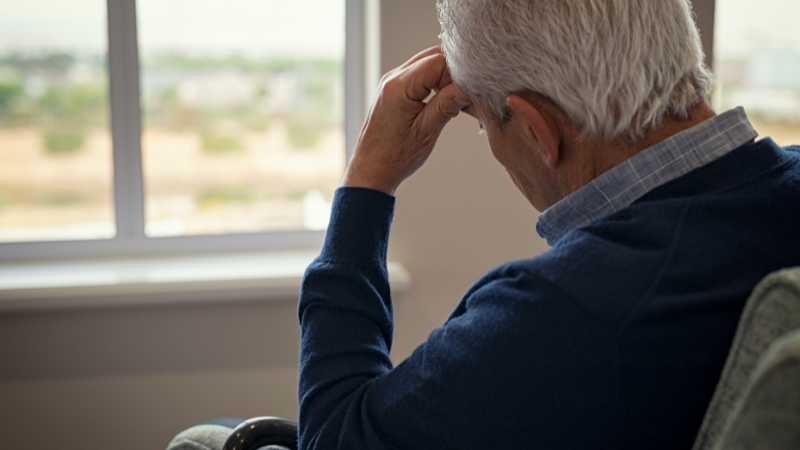Living with Parkinson’s disease presents unique challenges, one of which is the increased risk of falls. Fall detection for Parkinson’s disease is crucial in helping individuals maintain their independence and safety. By understanding how fall detection systems work and the benefits they provide, caregivers and families can make informed decisions to support their loved ones.

Understanding Parkinson’s Disease and Fall Risks
Parkinson’s disease is a progressive neurological disorder that affects movement. People with Parkinson’s often experience tremors, stiffness, and balance issues, which can lead to a higher risk of falling. According to the Parkinson’s Foundation, about 60% of individuals with this condition will experience at least one fall each year. This statistic highlights the importance of effective fall detection systems.
Why Fall Detection is Important
As Parkinson’s disease progresses, the likelihood of falls increases. Falls can result in serious injuries, such as fractures or head trauma, which can have devastating effects on the individual’s quality of life. Implementing fall detection systems can help mitigate these risks by providing immediate alerts to caregivers or emergency services when a fall occurs.
How Fall Detection Systems Work
Fall detection systems utilize various technologies to monitor an individual’s movements and detect falls. These systems can be worn as wearable devices, integrated into smart home systems, or used as standalone devices with sensors. When a fall is detected, the system sends an alert to a designated contact, allowing for a quick response and potentially preventing further injury.
Types of Fall Detection Systems
- Wearable Devices: These are often worn as pendants or wristbands. They use accelerometers and gyroscopes to detect sudden changes in movement that indicate a fall.
- Smart Home Systems: Integrated into the home environment, these systems use sensors placed in strategic locations to monitor activity and detect falls.
- Standalone Devices: These are placed in specific areas of the home and use motion sensors to detect falls.
Choosing the Right System for Your Needs
Selecting the appropriate fall detection system depends on various factors, including the individual’s lifestyle, living situation, and personal preferences. It’s essential to evaluate the features and capabilities of each system to ensure it meets the specific needs of the person with Parkinson’s.
Considerations for Selecting a System
When choosing a fall detection system, consider the following:
- Ease of Use: The system should be user-friendly and easy for the individual to operate.
- Reliability: Look for systems with proven track records of accuracy and reliability.
- Response Time: Ensure the system provides timely alerts to caregivers or emergency services.
Benefits of Fall Detection Systems
Fall detection systems offer numerous benefits for individuals with Parkinson’s and their caregivers. These systems provide peace of mind by ensuring that help is readily available in the event of a fall. They also promote independence by allowing individuals to maintain a sense of autonomy while knowing they are protected.
Improving Quality of Life
By reducing the fear of falling, fall detection systems can significantly improve the quality of life for individuals with Parkinson’s. They enable people to engage in daily activities with greater confidence, knowing that assistance is just a call away. This enhanced sense of security can lead to increased participation in social and physical activities, contributing to overall well-being.
Integrating Fall Detection with Other Safety Measures
Fall detection systems are most effective when combined with other safety measures. This comprehensive approach can further enhance safety and reduce the risk of falls.
Additional Safety Tips
- Home Modifications: Implementing changes like installing grab bars and removing tripping hazards can create a safer living environment. Learn more about physical therapy for fall prevention.
- Exercise and Balance Training: Engaging in regular physical activity and balance exercises can strengthen muscles and improve coordination. Discover more about balance training for seniors.
- Medication Management: Reviewing medications with a healthcare provider can help identify those that increase fall risk. Read more about medications that increase fall risk.

FAQs about Fall Detection for Parkinson’s
How do fall detection systems work?
Fall detection systems use sensors to monitor movement and detect sudden changes that indicate a fall. When a fall is detected, the system sends an alert to a designated contact for immediate assistance.
Are fall detection systems reliable?
Most modern fall detection systems are highly reliable and have been tested for accuracy. It’s important to choose a system with a good reputation and proven track record.
Can fall detection systems be used with other safety measures?
Yes, fall detection systems can be integrated with other safety measures such as home modifications and balance training to provide a comprehensive approach to fall prevention.
For more information on fall prevention, visit the Mayo Clinic’s guide on fall prevention.
This article contains affiliate links. We may earn a commission at no extra cost to you.






